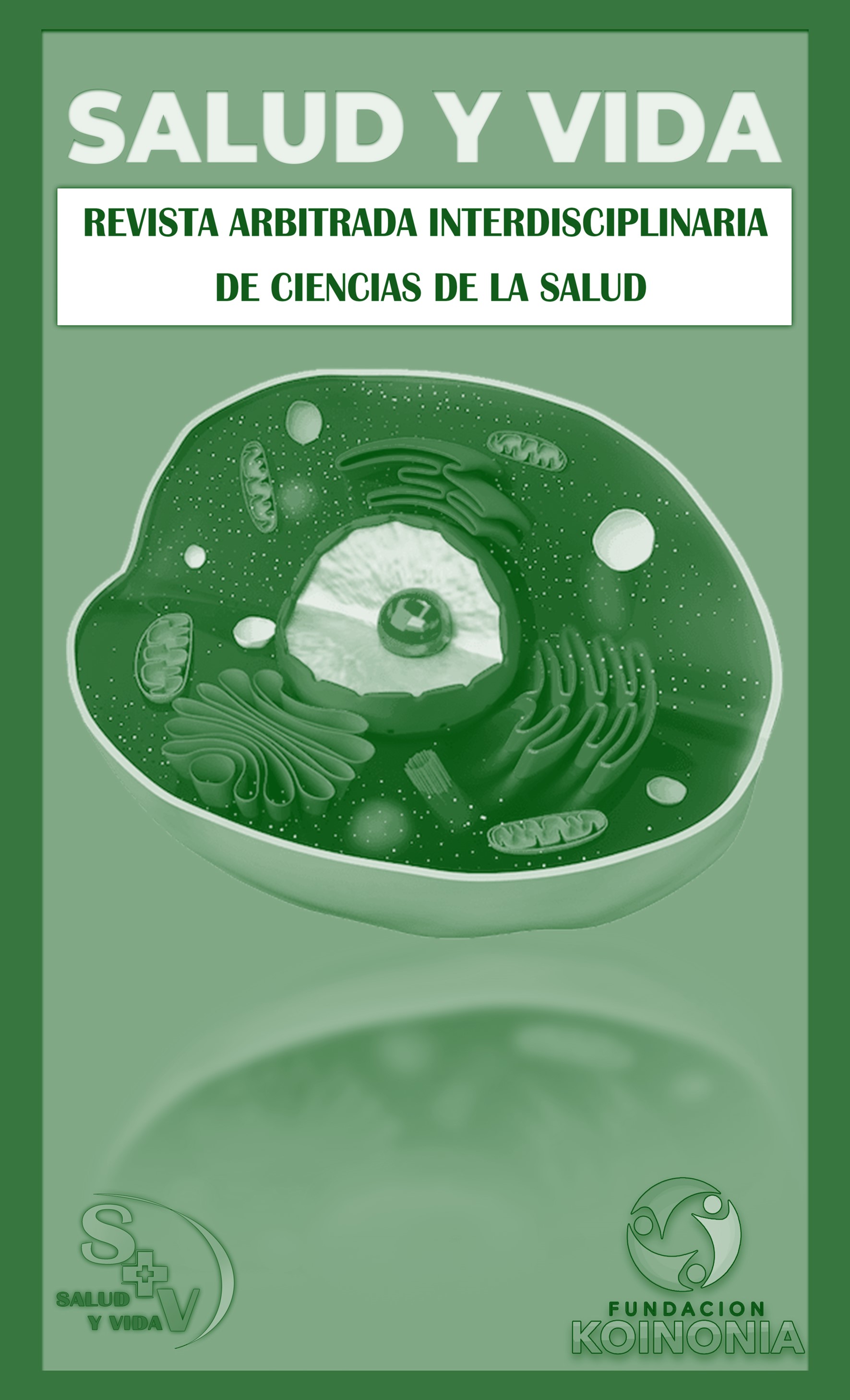Éxito en la colocación de microimplantes en Ortodoncia, según su ubicación y grado de inserción
DOI:
https://doi.org/10.35381/s.v.v9i1.4511Palabras clave:
Métodos de anclaje en ortodoncia, ortodoncia, ubicación, torque, (Fuente: DeCS)Resumen
Objetivo: El objetivo de esta revisión sistemática fue analizar el éxito en la colocación de los mini tornillos en ortodoncia según su ubicación y grado de inserción. Métodos: Se realizó un levantamiento sistemático de información mediante la búsqueda de artículos científicos en tres bases digitales tales como; Scopus, PubMed, Web of Science, a través de los descriptores de ciencias de la salud en español e inglés DeCs con sus respectivos operadores booleanos and, or, not, siguiendo los criterios PRISMA. Resultados: Se identificó múltiples investigaciones que estudiaron la tasa de efectividad en la colocación de los mini tornillos, dando como resultado que los mini tornillos ubicados en el maxilar brindan mayor estabilidad que los de la mandíbula, además que un ángulo de inserción de 90° podría brindar mayor estabilidad biológica al presentar mayor superficie ósea de retención.
Descargas
Citas
Creekmore TD, Eklund MK. The possibility of skeletal anchorage. J Clin Orthod. 1983;17:266-9.
Gainsforth BL, Higley LB. A study of orthodontic anchorage possibilities in basal bone. Am J Orthod. 1945;31:406-17.
Jara L, Camelo NM, Alvarez DJ, Cascavita CF, Martínez M. Orthodontic movement outcomes with mini-implants in orthodontic treatments. J Odontol Colomb. 2012;5(9).
Gil-Ramos LV, Maestre-Polanco VA, Herrera-Herrera A, Rebolledo-Cobos M. Factors influencing the success and/or failure of mini-implants in orthodontics: an exploratory systematic review. Duazary. 2022;19(3):229-42.
Gansukh O, Jeong JW, Kim JW, Lee JH, Kim KT. Mechanical and histological effects of resorbable blasting media surface treatment on the initial stability of orthodontic mini-implants. Biomed Res Int. 2016. https://doi.org/10.1155/2016/7520959
Ochoa J, Peralta P, Rojas M, Rouillon J, León B. Stability of micro-screws in orthodontics. Inspilip. 2022;54-9.
Gutiérrez Labaye P, Hernández Villena R, Perea García MA, Escudero Castaño N, Bascones Martínez A. Micro-screws: A review. Av Periodoncia Implantol Oral. 2014;26(1):25-38.
El Khatib A, El Tekeya M, El Tantawi M, Omar T. Oral health status and behaviors of children with autism spectrum disorder: a case-control study. Int J Paediatr Dent. 2014;24(4).
Gahona Gutiérrez O, Granic Marinov X, Díaz-Narváez V. Evaluation and comparison of dental implant stability in the maxilla and mandible at three different times using resonance frequency analysis. J Dent Res. 2016;10(3):475-81.
Chen CH, Chang CS, Hsieh CH, Tseng YC, Shen YS, Huang IY, et al. The use of microimplants in orthodontic anchorage. J Oral Maxillofac Surg. 2006;64(8):1209-15.
Wu TY, Kuang SH, Wu CH. Factors associated with the stability of mini-implants for orthodontic anchorage: a study of 414 samples in Taiwan. J Oral Maxillofac Surg. 2009;67(8):1595-9. http://dx.doi.org/10.1016/j.joms.2009.04.015
Azeem M, Haq AU, Awaisi ZH, Saleem MM, Tahir MW, Liaquat A. Failure rates of miniscrews inserted in the maxillary tuberosity. Dental Press J Orthod. 2019;24(5):46-51.
Fritz M, Doron Y, Álvarez E. Characteristics of areas determined for the use of mini-implants measured through cone beam computed tomography. Rev Latinoam Ortod Odontopediatr. 2022.
Iturbe OI, Núñez EG, Gayosso CÁ, Ibarra JG. Resistance to traction forces of mini-implants used in orthodontics depending on the insertion angle. Rev Mex Ortod. 2014;2(3):187-91.
Chawshli OF, Hasan HS, Yalda FA, Al-Talabani SZ. The success rate of mini-screws for incisor intrusion and patient age, gender, and insertion angle in the maxilla using CBCT and implant-guided surgery: a split-mouth, randomized control trial. Orthod Craniofac Res. 2024;27(1):118-25.
Raji SH, Noorollahian S, Niknam SM. The effect of insertion angle on orthodontic mini-screw torque. Dent Res J (Isfahan). 2014;11(4):448-51. http://www.ncbi.nlm.nih.gov/pubmed/25225557
Moon CH, Lee DG, Lee HS, Im JS, Baek SH. Factors associated with the success rate of orthodontic miniscrews placed in the upper and lower posterior buccal region. Angle Orthod. 2008;78(1):101-6.
Awuapara S, Cerro A, Meneses A. Mini-screws: Anatomical and tomographic evidence. 2008.
Takaki T, Tamura N, Yamamoto M, Takano N, Shibahara T, Yasumura T, et al. Clinical study of temporary anchorage devices for orthodontic treatment. Bull Tokyo Dent Coll. 2010;51(3):151-63.
Lorente P. Indications for micro-screws in orthodontics. 2004;281-307.
Arismendi J, Ocampo Z, González F, Martínez M. Mini-implants as anchorage in orthodontics. Rev Fac Odontol Univ Antioquia. 2006;18(1):82-94.
Benavides S, Costa L, Cruz P, Universidad Latina de Costa Rica. Miniscrews: A new alternative in orthodontic treatment. Odontol Vital. 2016;63-75.
Zhang J, Liu H. Evaluation of the long-term stability of micro-screws under different loading protocols: a systematic review. Syst Rev Orthod. 2019;1-13.
Casaña M, Bellot PV. Risk factors for orthodontic mini-implants in skeletal anchorage biological stability: a systematic literature review and meta-analysis. Sci Rep. 2020;10(1):1-10.
Ivan MB, Doris IV, José AA, Héctor RR. Metallurgical behavior of Ti-6Al-4V mini-implants as temporary anchorage in orthodontic applications. Ing Investig Tecnol. 2014;15(1):21-8. http://dx.doi.org/10.1016/S1405-7743(15)30003-2
Haddad R, Shalash M. Distance to alveolar crestal bone: a critical factor in the success of orthodontic mini-implants. Prog Orthod. 2019;20(1):19.
Nienkemper M, Santel N, Honscheid R, Drescher D. Stability of orthodontic mini-implants at different insertion depths: sensitivity of three stability measurement methods. J Orofac Orthop. 2016;77(4):296-303.
Cha J, Hwang CJ. Miniscrew stability evaluated with computerized tomography scanning. Am J Orthod Dentofacial Orthop. 2010;137(1):73-9.
Lycsek J, Ajayi A. Fundamental factors related to orthodontic micro-implant stability: Review of the literature. Wroclaw Med Univ Polish Dent Soc. 2017;189-93.
Kaczmarek J, Bartkowiak T, Paczos P, Gapinski B, Jader H, Unger M. How Do the Locking Screws Lock? A Micro-CT Study of 3.5-mm Locking Screw Mechanism. Vet Comp Orthop Traumatol. 2020;33(5):316-326. http://dx.doi.org/10.1055/s-0040-1709728
Publicado
Cómo citar
Número
Sección
Licencia
Derechos de autor 2025 Paula Dayana Romero-Chica , Cristian Hernán Campoverde-Torres

Esta obra está bajo una licencia internacional Creative Commons Atribución-NoComercial-CompartirIgual 4.0.
CC BY-NC-SA : Esta licencia permite a los reutilizadores distribuir, remezclar, adaptar y construir sobre el material en cualquier medio o formato solo con fines no comerciales, y solo siempre y cuando se dé la atribución al creador. Si remezcla, adapta o construye sobre el material, debe licenciar el material modificado bajo términos idénticos.
OAI-PMH: https://fundacionkoinonia.com.ve/ojs/index.php/saludyvida/oai.









